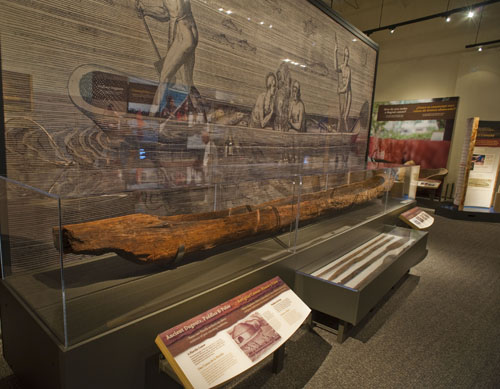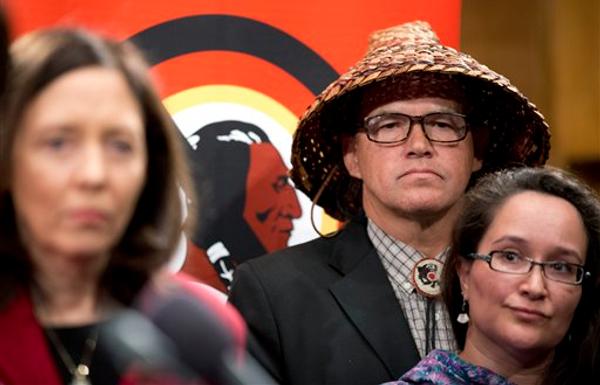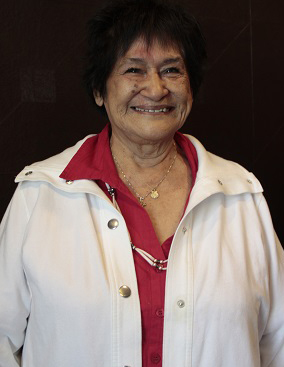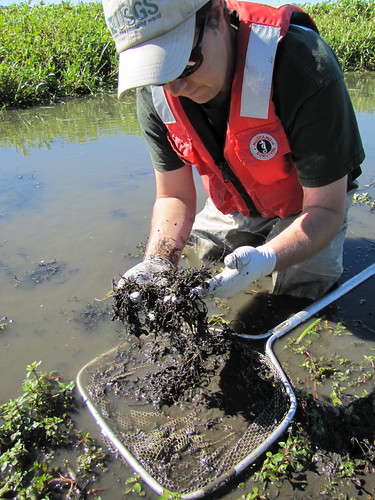
syəcəb


Olivia Poblacion, OPB
Animal lovers are spending more on their pets than ever, and a lot of that money is going into vet care.
But medications the vet prescribes for Fido’s health may be contaminating our watersheds.
Just like pharmaceuticals and personal care products (PPCPs) for humans, soaps and medicines for pets contain compounds that can harm aquatic ecosystems.
“There is a cocktail of chemicals being detected in our watersheds,” said Sam Chan, a watershed health specialist with the Oregon Sea Grant.
Even though the concentrations are low, PPCPs in watersheds have still been shown to impact the development and behavior of fish and can make them more susceptible to predation.
The National Sea Grant program recently partnered with the American Veterinary Medicine Association to promote the reduction of improper PPCP disposal. As part of this project, Chan and other researchers at OSU are launching a national survey to learn more about the practices and awareness of this issue among pet owners and veterinary professionals.
“The main way people dispose of these products is by throwing them in the garbage,” Chan said. “It seems like a reasonable solution, but when they go to the landfill, rain seeps through and then the water is contaminated with those compounds.”
So what’s the best way to get rid of unused PPCP’s for pets? Definitely don’t flush them. Chan recommends either taking them to a drug take-back event or mixing them with something unpalatable to pets (such as coffee grounds) and then putting them in a sealed container and depositing in the trash.
Why vote? It takes planning, some time, and the rewards are not always visible. The same problems will surround American Indians and Alaska Natives before and after the election.
It’s easy to be trite and type, “this election matters more than most” and then cite specifics to make that case. But it’s not true. Win or lose (no matter who we support) life will go on.
But there are reasons to vote. Examples big and small that show how we can make a difference. Here we go.
One. Because voting is an act of sovereignty. The late Billy Frank Jr. used to articulate different ways that we practice sovereignty today. Taking a fish is an act of sovereignty. Using an eagle feather is sovereignty. Or picking berries.
I would add voting to that list. There’s a great example going on right now: the Independence vote in Scotland. Every Scot citizen, 16-years and older, will have a say about their future country. But that voice is only possible now because of Scotland’s participation in the United Kingdom’s electoral process. The idea of returning power had to be ratified in Parliament, a proposition demanded and promoted by the elected representatives from Scotland. Other countries have gone to war over independence. But Scotland is voting. The ultimate use of sovereignty.
Two. Because too many folks don’t want you to vote. Across too many government officials are taking steps to make casting a ballot harder, limiting early voting options, alternative polling spots, or failing to account for Native languages. Across the country there are lawsuits seeking resolution.
But in addition the smartest act of defiance is to vote. Every vote is reprimand of the philosophy to limit access. One of the worst examples of that notion surfaced last week when a Georgia state senator said he preferred “educated voters” to any increase in voters.
Three. Because climate change is real and any candidate who says it’s not, should be ruled out as a leader. The science is clear 97 percent of all peer-reviewed papers say the same thing: Global warming is real and humans are the cause. (This graphic from NASA is one way to see it for yourself.)
Why does this matter? Because our political leaders are going to have to make tough choices in the years and decades ahead on issues. Indian country is already being impacted and that will only get worse as communities will need significant new resources for mitigation or even relocation. If you vote for your children, this might be the most important single reason.
Four. Because the Affordable Care Act matters. American Indians and Alaska Natives have been calling for full funding for the Indian health system for, well, since the Treaty era in the 19th century. But never in the history of the country has Indian health been adequately funded. For all its problems, the Affordable Care Act opens up a mechanism to significantly increase the revenue stream for Indian health.
And the alternative from critics? There is not one.
Five. Because the Violence Against Women Act represents how politics can serve the greater good. So roll back the clock to a time when there were not enough votes in the U.S. Senate to pass the Violence Against Women Act with the provisions to give tribes additional authority. Then on April 25, 2012, at a news conference on Capitol Hill, Then Tulalip Tribal Vice Chairman Deborah Parker told her powerful personal story about abuse. Her story carried on YouTube and across the nation via social media as well as legacy media changed everything. The Senate passed the measure. Then the House leadership supported an extraordinary deal. According to Talking Points Memo: “The Rules Committee instead sent the House GOP’s version of the Violence Against Women Act to the floor with a key caveat: if that legislation fails, then the Senate-passed version will get an up-or-down vote.”
That made it possible for Congress (and the president to sign into law) the renewal of the Violence Against Women Act.
Six. Because friends matter. Even when the disagree. Most of the time, anyway. The Violence Against Women Act is a good example of why friends matter. Oklahoma’s Tom Cole was able to convince Republican leadership about the importance of the act. This law would not have happened without him. Cole, and Idaho’s Rep. Mike Simpson, have been important voices within the Republican caucus on matters ranging from VAWA to limiting the damage from sharp budget cuts.
And that brings me to seven …
Seven. Because there should never, ever be another Alaska Exception. If the Violence Against Women Act represents the best in politics, the Alaska Exception is the opposite. Alaska has epidemic levels of sexual violence and rape. So what does Congress do? It takes away a tool that tribal communities might be able to use to turn the situation around.
What’s worse is that the exception was inserted into the bill by Alaska Republican Sen. Lisa Murkowski who owes her election to Alaska Native voters and corporate spending. (I know this undermines Reason Six.) The Washington Post said last month: “Now, after pressure from Alaska Natives, Murkowski is reversing her position and trying to repeal the provision she inserted.” There are no heroes in Congress on this provision, including Alaska Sen. Mark Begich, a Democrat, who also supported the exception. He, too, has reversed himself.
The promise unfulfilled is that Congress would revisit this issue. That has yet to happen. But this whole episode should be a warning; a never again moment.
Eight. Because Congress must pass a Carcieri fix. The Supreme Court ruled in 2009 that limits what land the Department of Interior can take into trust. This has significant impact on tribal economic development. Montana’s Sen. Jon Tester, chairman of the Indian affairs committee, told Indian Country Today Media Network that while he believes in a clean fix, “many of my colleagues in the Senate don’t agree.”
The way to change that is pressure from voters.
Nine. Because your vote counts more than the gadzillions spent by those with money. Turn on a television and you see that money at work, ad after ad, dark images, somber music, and words about the evils of certain candidates. Politics should be about ideas and policies more than personality. What do we want out of government? How do we pay for that? Those are the big questions. The best way to do that is to ignore the campaigns and just vote.
Ten. Because women matter. More than half the population of the country is female yet representation is only about one-fifth in the Senate and even less than that in the House. As The Washington Post reported this week: “The Congress has always been and continues to be the domain of white men.” I think of the words of the late Wilma Mankiller. She said Cherokee treaty negotiators asked the United States team, “Where are your women?” Cherokee women often accompanied leaders at negotiations and so it was inconceivable that the federal government would come alone. There must be balance if we want to become the democracy that we can be.
Finally, in the spirit of Spinal Tap, let’s turn this vote meter to Eleven. Why eleven? Because it’s not ten. Where can you go from there? Eleven. One louder.
So reason number eleven. Because we can win. I started this post by mentioning the election coming up in Scotland. Some 4.2 million citizens signed up to vote, a 97 percent registration. Imagine what would happen if American Indians and Alaska Natives voted with those kind of numbers. It would upend politics in from Alaska to Wyoming. Local leaders would be replaced and we would have a far greater say in programs and policies. Already there’s evidence that the Native vote make a difference, but that influence should be growing. We have a younger population and in a low turnout election, we could call the shots. We could be one louder.
Mark Trahant holds the Atwood Chair at the University of Alaska Anchorage. He is an independent journalist and a member of The Shoshone-Bannock Tribes. For up-to-the-minute posts, download the free Trahant Reports app for your smart phone or tablet.
Read more at http://indiancountrytodaymedianetwork.com/2014/09/15/ten-reasons-why-every-native-should-vote-156891?page=0%2C1
Labateyah Youth Home, operated by the United Indians of All Tribes Foundation, received a donation of 25 sets of lightly used dormitory furniture from Seattle Pacific University in Seattle, Washington.
University building maintenance personnel delivered the donated furniture to the youth home in Seattle’s Crown Hill neighborhood. Labateyah provides transitional housing, rehabilitative services, and counseling for homeless youth of all backgrounds.
“We hold our hands up in gratitude to Seattle Pacific University,” foundation chairman Jeff Smith, Makah, said in a press release. “SPU’s donation came at just the right time. Our old furniture was just not serviceable and we were despairing of finding replacements.” He said Seattle Pacific University’s gift will help Labateyah to continue providing essential services to the region’s homeless youth.
Labateyah Youth Home Manager Jenna Gearhart added, “Labateyah Youth Home is currently under-funded and we were very concerned about how we could replace our unusable furniture. Seattle Pacific University’s gift is wonderful. You should see the residents’ smiles.”
Labateyah means “transformer” in the Lushootseed language. Labateyah Youth Home was founded in 1992 by Native activist Bernie Whitebear, and provides a nurturing dormitory-style home for people ages 18 to 23. Residents can stay for up to 18 months and are provided with access to medical care, assistance with school placement, life skills training, and career counseling. Coaches work with residents to develop personal plans for self-sufficiency.
In addition to residents’ rooms, Labateyah Youth Home has a classroom, gym, music room, dining room and kitchen.
According to the foundation, Labateyah Youth Home has served more than 1,900 residents, of which 1,200 have gone on to permanent housing, since it was founded.
The youth home is located in a three-story building built in 1930; it was originally Crown Hill Hospital and is considered a local landmark by the neighborhood association. Friends of Labateyah, a group of professionals and community members, was formed to assist the United Indians of All Tribes Foundation in determining potential land, building and zoning improvements for the youth home site.
Read more at http://indiancountrytodaymedianetwork.com/2014/09/16/seattle-pacific-university-donates-furniture-labateyah-youth-home-156809

The National Football League is obviously a hugely profitable enterprise. According to Forbes, its net revenues are more than $9 billion, more than any other sports league. NFL Commissioner Roger Goodell’s pay package last year was reportedly $29.4 million. The teams make a lot of money, Goodell makes a lot of money, and the league has as much as it needs to spend, as evidenced by the $36 million it shelled out for its new New York City headquarters.
Yet according to the U.S. governement, the NFL is a nonprofit—and therefore not subject to taxes. Earlier today, Senator Maria Cantwell (D-Washington) announced that she will introduce legislation to revoke the league’s tax-exempt status due to its refusal to take action on the Washington Redskins name, which is defined in most dictionaries as a derogatory racial slur.
“The NFL needs to join the rest of Americans in the 21st century,” Cantwell said, according to the Washington Post. “It is about right and wrong.”
Cantwell was speaking at a press conference organized by the Change The Mascot campaign, which has been spearheaded by Oneida Indian Nation Representative Ray Halbritter. Change the Mascot announced that it is sending a letter, signed by Halbritter and Brian Cladoosby, President of the National Congress of American Indians, to all NFL team owners. It reads, in part:
The league is promoting this racial slur with the resources of every team, including yours, which makes it a league-wide crisis. Indeed, Congress has granted the league tax exempt status and anti-trust exemptions, in part, because it is a singular American institution—one in which you are a financial stakeholder. That status provides you both the opportunity and obligation to act so that your own resources—and taxpayer resources—are no longer being expended to promote this slur.
Change the Mascot goes on to suggest that the NFL should put pressure on Washington Redskins owner Dan Snyder. According to the NFL’s own bylaws, the league can take disciplinary action against any “owner, shareholder, partner or holder of an interest in a member club (who) is guilty of conduct detrimental to the welfare of the League or professional football.”
Read more at http://indiancountrytodaymedianetwork.com/2014/09/16/want-keep-racist-name-nfl-then-start-paying-taxes-says-senator-156923
The relief that California tribes experienced when the U.S. Bureau of Reclamation agreed to open water flows into the Trinity River to avert a fish kill may have been short-lived. Fears were revived and water flows have been increased again after the discovery of a deadly parasitic salmon-killing disease in the Lower Klamath River.
RELATED: Tribal Officials Urge Water Release Into Klamath River to Prevent Mass Fish Kill
A U.S. Fish and Wildlife Service pathologist has found severe ich (ichthyophthirius multifiliis) infestations in fall-run Chinook salmon taken from the Lower Klamath River, the Hoopa Valley Tribe said in a statement on September 15. This is the same disease that killed 60,000 to 80,000 fish in 2002.
“The fear is that all the fish might die in the Lower Klamath like they did in 2002,” said Robert Franklin, senior hydrologist with Hoopa Tribal Fisheries, in the statement.
The disease spreads quickly in overcrowded, warm waters, both conditions that are caused by lower water flows into the rivers, as fish congregate in small, cooler areas. The Hoopa Valley and other tribes had implored Interior Secretary Sally Jewell to agree to release flows and divert them from agricultural use, which the Bureau of Reclamation did at the end of August.
RELATED: Fish Kill Averted: Department of Interior Agrees to Release Water Into Klamath River
Water flow on the Trinity would have to double immediately to prevent the infection from spreading, Franklin said in the statement, because it would take days for the water to reach the Lower Klamath River.
“The Hoopa Valley Tribe is very appreciative of the earlier action that Reclamation took by releasing preventative flows,” Hoopa Valley Tribal Chairwoman Danielle Vigil-Masten said in the tribe’s statement. “We are in another stage that we did not anticipate and we shouldn’t deviate from what the science tells us to do. We expect that Reclamation will take the right action which is to release the emergency flows that are called for under the criteria.”
The U.S. Department of the Interior agreed, and began releasing the water from Trinity Reservoir on September 16. The Hoopa Valley Tribe warned that water levels along part of the river would rise as high as four feet during the increased flow period, which could last for seven days.
“This is the only possible means of preventing or reducing the severity of a parasite outbreak,” said Bureau of Reclamation Mid-Pacific Regional Director David Murillo in a statement. “We are greatly concerned about the impact today’s decision may have on already depleted storage levels, particularly the cold water pool in Trinity Reservoir. We must, however, take all reasonable measures to prevent a recurrence of the fish losses experienced in 2002.”
Read more at http://indiancountrytodaymedianetwork.com/2014/09/17/deadly-disease-detected-lower-klamath-chinook-salmon-water-flow-increased-again-156926

By: Northwest Indian Fisheries Commission
OLYMPIA – Lorraine Loomis, a Swinomish tribal member, has been elected chair of the Northwest Indian Fisheries Commission.
She replaces the late Billy Frank Jr., who served as NWIFC chairman for more than 30 years. Frank died on May 5, 2014 at the age of 83.
“I am honored and humbled to be elected chair of the NWIFC,” said Loomis. “No one can ever replace Billy. It will take all of us to carry on his work.”
Loomis, who was serving as vice-chair of the commission, will fill the remainder of Frank’s term as chair through May, 2016. Shawn Yanity, Stillaguamish tribal chair, was elected to replace Loomis as vice chair. Ed Johnstone, Quinault Indian Nation, will continue as NWIFC treasurer.
Loomis, 72, has been Swinomish tribal fisheries manager since 1975. She has extensive experience in fisheries management throughout the region. She currently serves on the Fraser River Panel of the Pacific Salmon Commission that manages sockeye and pink salmon under the U.S./Canada Pacific Salmon Treaty. Loomis also coordinates tribal participation in the annual North of Falcon salmon season development process with the State of Washington.
“Our treaty rights are at serious risk today,” Loomis said. “Salmon recovery is failing in western Washington because salmon habitat is disappearing faster than it can be restored. If there are no salmon available for harvest, our treaty rights mean nothing. We must stop this ongoing loss of habitat, but so far the trend shows no sign of improvement. We are looking to the federal government, as our trustee, to take a more active role in salmon recovery and lead a more coordinated salmon recovery effort.”
The NWIFC is a support service organization for the 20 treaty Indian tribes in western Washington that are co-managers of the region’s natural resources with the State of Washington. The commission provides services to tribes in areas such as fisheries management, habitat protection and fish health. The NWIFC also provides a forum for tribes to address shared natural resource management concerns and enables the tribes to speak with a unified voice.
The NWIFC is headquartered in Olympia, with satellite offices in Forks, Burlington and Kingston and employs a staff of 70.
By Ashley Ahearn, KUOW
WASHOUGAL, Wash. — Coal had been transported around the country by rail for decades before the recent push to bring it by train to ports in the Northwest.
And yet, scientists don’t really know how much coal dust could escape from rail cars, how far it might travel, and what coal-borne mercury and other contaminants might do to aquatic life.
With the permitting process moving forward for two large coal terminals in Washington, a team of scientists with the U.S. Geological Survey is trying to find out how the chemicals in coal might interact with the environment.
“We really don’t know what the effects are and whether it is an issue,” says Bob Black, a scientist with the USGS.
Black is the lead scientist on the new study, which has him squelching through the muck at the Steigerwald Wildlife Refuge near Washougal, Washington. The refuge is sandwiched between the Columbia River to the south, and train tracks to the north.
Black and his team are gathering data for a first-of-its kind scientific study of coal and its potential impacts on wetland ecosystems. As he sloshes through the shallow marsh’s waters to plant minnow traps, Black says he knows that he’s also wading into a controversial issue.
“There are communities that are economically interested in this and then there are suggested environmental impacts and ultimately I can have my own personal views but I can’t let those come into play and essentially that’s our role. We can’t let that be part of our science,” Black says.
The team fans out across the marsh as a BNSF Railway train screeches along tracks less than a quarter-mile away. This train is not hauling coal. Right now, roughly one coal train per day travels along the Columbia River before turning north and following the shoreline of Puget Sound to service Canadian coal terminals. But if terminals are built in Longview and near Bellingham, that number could jump to more than 20 coal trains per day.
Some coal does escape from trains, as BNSF has testified publicly in the past. Environmental groups have sued BNSF Railway for violating the Clean Water Act by allowing coal and coal dust to escape from trains and get into waterways along tracks in the Northwest. A judge ruled this month in favor of local groups in Seward, Alaska after they sued a nearby coal terminal for similar Clean Water Act violations. However, supporters of coal exports have called the coal escapement issue a red herring, used by anti-coal environmental groups to spark public alarm.
The USGS is gathering samples of muck, fish and insects from two sites in this wildlife refuge, one close to the tracks, the other farther away. The goal is to find out whether more mercury and polycyclic aromatic hydrocarbons (PAHs) are showing up near the train tracks and how those contaminants are behaving in the environment.

Collin Eagles-Smith hunts for dragonfly larvae at Stiegerwald
Lake National Wildlife Refuge. Credit: Ashley Ahearn
Collin Eagles-Smith, an ecologist with USGS, stands thigh-deep in the marsh, net in hand. He’s sifting through handfuls of black muck, looking for dragonfly larvae. When he finds one, he opens his palm to display the specimen before putting it in a little plastic baggy to take back to the lab for analysis. Eagles-Smith says dragonflies can serve as vectors to transmit mercury contamination out of the aquatic environment and into land-based ecosystems because they feed on all kinds of plankton and other tiny organisms. When they grow up and fly out of the muck they are in turn eaten by birds, frogs, fish and other animals, potentially transferring mercury contamination up the food chain.
“So what we’re looking at is essentially, is there mercury in this dragonfly and then we’re going to be using a fairly sophisticated approach to fingerprint the isotope ratios of the mercury to see if we can say whether the mercury in this dragonfly was from coal dust,” he explains.
By comparing dragonfly larvae, sediment and fish samples from this site with those from another site farther from the tracks, the team hopes to see how far contamination from coal trains could travel. But Eagles-Smith says there are still a lot of questions about how active the mercury in coal might be if it gets into the environment. Mercury is believed to be inert and less harmful to the environment until it goes through a complex biological process known as mercury methylation.
“I like to think of it as activating the mercury, and it makes it more biologically available, more toxic. Do you smell that rotten egg smell?” Eagles-Smith asks from his mucky perch. “That is the smell of tiny organisms breaking down organic material. Those same organisms are the ones that take the mercury, the less toxic form of mercury, and convert it into the methyl mercury.”
Once it’s methylated, mercury has been shown to be a potent neurotoxin, Eagles-Smith explains. “It can influence stress hormones, thyroid hormones, and sex hormones so it can impact wildlife reproduction, fish behavior, their survival, their ability to hunt for prey or their ability to avoid predation.”
The unique rotten-egg decaying process that takes place in low-oxygen marshy environments like this means that wetlands could be hotspots for transforming inert mercury from coal into a more toxic and biologically-available form that can then make its way up the food chain, the scientists worry.
Emerging technology is helping scientists zoom in on more specific sources of mercury pollution in the environment. Mercury can travel in air pollution for thousands of miles. But scientists want to know if coal trains that pass through wetlands like this might serve as a sort of direct deposit of mercury pollution.
The USGS expects to have preliminary results within the next 6 months, though the researchers caution that this is a small sample size and more study is needed. The results will be shared with the state and federal agencies that are studying the environmental impacts of the two proposed coal terminals in the Northwest.
By Susana Mas, CBC News, Canada

The federal government has tabled a plan to address violence against aboriginal women and girls, announced Minister for Status of Women Kellie Leitch as MPs returned to Parliament after the summer recess today.
“We have heard from victims’ families directly and they want action. And that’s precisely what we are delivering,” said Leitch during question period today.
The government has budgeted $25 million over five years to deliver the plan — a commitment first announced in the February 2014 budget.
The plan flows from the 16 recommendations MPs sitting on the Special Committee on Violence Against Indigenous Women made last March.
The $25 million plan, which would run from 2015-20, would include:
The opposition parties continued to call on the Conservatives to heed calls for a national public inquiry into missing and murdered aboriginal women.
NDP Leader Tom Mulcair said only a public inquiry would get to the root causes of the problem. “There’s still a lot of work than can be done looking at the systemic causes here, and that’s what we’re calling for,” he told reporters on Monday.
Mulcair has said if the NDP were to form the government after the next federal election, it would call a public inquiry within 100 days.
Liberal aboriginal affairs critic Carolyn Bennett denounced today’s plan as “political smoke and mirrors.”
In a statement to CBC News, Bennett said “today’s so-called ‘Action Plan’ simply implements the whitewashed recommendations of the Conservative dominated Special Committee … and is nothing more than a laundry list of existing piecemeal government initiatives, many not even specific to Indigenous women and girls.”
Bennett said the Conservatives should call a “non-partisan” inquiry to find out “why this problem has persisted for decades and why successive governments have been unable to fix it.”
Today’s announcement is in addition to other initiatives the government has said it will support, such as the creation of a DNA-based missing persons database.
by FELICIA FONSECA, Associated Press
FLAGSTAFF, Ariz. (AP) – Chris Deschene says he has the resume to preside over the country’s largest American Indian reservation. He’s a graduate of the U.S. Naval Academy, served in the Marines, owns a private law practice, and aims to defend tribal tradition in the Navajo Nation’s top elected post.
But his critics say he’s missing at least one thing, and it’s crucial. They say he doesn’t know how to speak Navajo fluently and should be disqualified from the presidential race because it is a requirement for candidates under tribal law. Deschene says fluency is a matter of opinion and that his language skills are getting better every day.
The issue came to a head when several Navajo citizens and presidential candidates filed grievances against Deschene, saying he shouldn’t appear on the ballot in November’s general election. The challenges were dismissed this week as being untimely or lacking standing, but they can be appealed to the tribe’s Supreme Court.
The Navajo language is a vital part of the tribe’s culture, most commonly spoken among elderly Navajo people as their first language and less so among younger generations. Most tribal members grow up hearing it at home and in prayers and songs recited during ceremonies. It is perhaps most well-known outside the reservation for its use during World War II in a code that the Japanese couldn’t break.
When Navajos sign up to run for tribal president, they attest to being fluent in the language. Kimmeth Yazzie of the Navajo Election Administration says the document is taken at face value, and election officials aren’t allowed to investigate the qualifications. That authority is delegated to the tribe’s Office of Hearings and Appeals when candidates for the same office file a challenge within a certain timeframe.
Deschene, 43, said he has never misled voters into believing he thoroughly knows the language. He speaks Navajo in online advertisements, in the homes of elders and says he’s well-versed in traditional songs and ceremonies.
“I’ve made a commitment to the language, and I’ve stated a number of times that my personal goal is to be completely fluent by the end of my first term,” said Deschene, of LeChee on the western side of the reservation.
Percy Deal, one of Deschene’s critics on the language issue, commended Deschene for his willingness to learn Navajo but said he should become fluent and seek office again in four years. Deschene should understand as a lawyer, former Democratic nominee for Arizona secretary of state and onetime state representative that he shouldn’t skirt the law, Deal said.
“The laws have to apply to everybody,” he said. “Nobody is above the law.”
Determining whether a person is fluent isn’t easy, said Michele Kiser, who teaches Navajo at the University of New Mexico in Albuquerque. She said teachers can take a proficiency test that includes speaking, reading and writing, but there is not a set of defined parameters for determining fluency.
“Fluency is a continuum, really,” she said.
Some 169,000 people speak Navajo at home, more than any other American Indian language, according to census figures released in 2011. But Kiser said that data doesn’t show how many are considered fluent speakers.
Deschene came in second to former Navajo President Joe Shirley Jr. in the tribe’s primary election last month among 17 candidates, earning him a spot in the general election. Traditional, conservative voters tend to choose candidates who can speak Navajo, understand them and who have a strong cultural upbringing, said Manley Begay, who is Navajo and a professor in applied indigenous studies at Northern Arizona University.
“Clearly there were some of the traditionalists supporting Chris Deschene, partly because of his appeal and youthfulness and also some of his ideas and thoughts might resonate with them,” Begay said.
The grievances filed against Deschene were the first over the language requirements, said Richie Nez, chief hearing officer for the Office of Hearings and Appeals.
Other presidential candidates have been challenged on term limits and residency, though living or having a continual presence on the reservation is no longer required.
Shirley lost a bid four years ago to seek a third, consecutive term because Navajo law limits presidents to two back-to-back terms. Shirley argued that Navajos have the right to freely choose their leaders under traditional law.
A presidential candidate in 2002 argued that he met residency requirements for the job despite living off the reservation because his umbilical cord was buried there, forever tying him to the land. Edward T. Begay’s name was placed on the primary ballot as a matter of fairness, after the tribe’s high court determined all candidates were not treated equally.